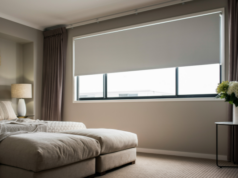
Once considered a niche option, uPVC (unplasticised polyvinyl chloride) windows are now a mainstream choice for Australian homes. Known for their energy efficiency, durability and low maintenance, these window systems are increasingly favoured by builders, renovators and designers alike.
With rising energy costs, stricter building standards and a growing focus on sustainable materials, 2025 marks a significant turning point for uPVC in residential construction.
What is uPVC?
uPVC is a rigid, weather-resistant plastic material used in window and door frames. It doesn’t rot, warp, rust or corrode, making it well suited to Australia’s harsh and varied climates from the dry heat of the outback to coastal regions prone to salt spray. Unlike traditional vinyl, uPVC doesn’t contain plasticisers, which means it maintains its shape and performance over time.
Superior thermal performance
One of the major benefits of uPVC windows is their excellent insulation properties. Most systems feature multi-chambered profiles and are often foam-filled, providing a strong barrier against heat transfer. When paired with double or triple glazing, uPVC frames can dramatically reduce the amount of heating and cooling required to keep a home comfortable year-round.
Energy-efficient uPVC windows commonly include Low-E glass, argon gas fills and thermal breaks. These features help reduce heat loss in winter and heat gain in summer, contributing to lower energy bills and improved home sustainability.
Many products now achieve impressive Window Energy Rating Scheme (WERS) values between 1.6 and 2.7, outperforming standard aluminium systems, which typically sit around 5.6.
Glazing options: Double and triple now standard
While double glazing has long been the default for performance windows, triple glazing is increasingly specified in cooler Australian regions. This upgrade can reduce thermal losses by 25–40% over standard glazing, offering real comfort benefits in states like Victoria and Tasmania.
As building standards continue to evolve, particularly in relation to the National Construction Code (NCC), triple glazing is likely to become more commonplace across all climate zones.
Aesthetic flexibility
Modern uPVC windows no longer look plastic. In fact, they come in a wide variety of finishes, including matte colours, bold architectural tones (like black and deep green), and realistic timber-look foils. These finishes resist fading and discolouration, even in high UV environments.
uPVC systems also support contemporary design trends. Their slim frames and structural integrity make them ideal for large fixed windows, sliding doors and panoramic openings that maximise views and daylight.
Popular configurations include:
- Tilt-and-turn windows
- Casement and awning styles
- Sliding and stacking doors
- Bi-fold and lift-slide systems
- Custom shapes, including arches and raked designs
Smart features and improved security
Security is a growing consideration for homeowners, and uPVC windows now typically include multipoint locking systems. These mechanisms enhance both security and airtightness, improving the overall energy efficiency of the home.
Smart home integration is another key trend. Automated window openers, sensor-controlled ventilation and app-connected features can now be specified as part of the uPVC system, adding a level of convenience that aligns with broader home automation solutions.
Performance in harsh conditions
uPVC frames are highly resistant to bushfire, salt spray and termites—common issues across Australia. BAL-40 rated systems are available from several suppliers, making uPVC a viable option in bushfire-prone areas.
They are also recyclable, up to seven times without losing performance, which appeals to homeowners looking to reduce the environmental footprint of their build or renovation.
Installation and pricing
While uPVC windows are generally more expensive than standard aluminium, their long-term performance can justify the upfront cost. As of 2025, typical costs in Australia are:
| Item | Average Price (incl. GST) |
|---|---|
| Standard double-glazed window | ~$900 per m² |
| High-performance sliding or lift-slide doors | ~$1,300 per m² |
| Installation (per window, including removal) | ~$350 |
| Upgrades (e.g. triple glazing, acoustic glass, automation) | +50–75% |
Pricing varies by project size, location and supplier. Most products come with 7–10 year warranties, with some European systems offering 15+ years on frames and hardware.
What to look for when choosing uPVC
When selecting uPVC windows and doors, consider the following:
- Energy ratings – Check for WERS, Green Star or BASIX compliance.
- BAL ratings – If you’re in a bushfire zone, BAL-rated products are essential.
- Acoustic performance – For homes in busy or high-density areas.
- Smart features – Integration with your home automation or ventilation systems.
- Finishes and frame profiles – Choose colours and styles that complement your home’s architecture.
As energy efficiency, bushfire compliance and sustainability become increasingly important in Australian homes, uPVC windows are a compelling alternative to aluminium and timber. They offer durability, strong performance across climates, and a sleek modern aesthetic, ticking the boxes for both new builds and renovations in 2025.





